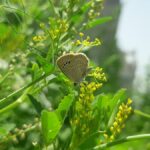ESCAPING THE NARCISSIST
Are you trapped in a toxic relationship? It's time to reclaim your life and find healing. ESCAPING THE NARCISSIST: HOW TO HEAL AND RECOVER FROM NARCISSISTIC ABUSE IN RELATIONSHIPS is your guide to breaking free and starting your journey towards recovery.
Don't let the pain control you any longer. Take the first step today and discover the strategies to overcome emotional abuse and rebuild your life. You deserve happiness and peace.
Start Your Healing Journey TodayThe concept of flying monkeys has been a part of human folklore and mythology for centuries. In many cultures, these creatures are often depicted as magical or supernatural beings with the ability to fly. One of the most well-known depictions of flying monkeys comes from L. Frank Baum’s “The Wonderful Wizard of Oz,” where they serve as minions to the Wicked Witch of the West. This portrayal has cemented the image of flying monkeys as sinister and malevolent creatures in popular culture.
In reality, the origins of the flying monkey myth can be traced back to various species of primates that inhabit the forests of Central and South America. These primates, known as spider monkeys, have the ability to leap from tree to tree with great agility, giving the impression of flight. Over time, this behavior may have contributed to the creation of the flying monkey myth, as people observed these primates moving effortlessly through the treetops.
The Reality of Flying Monkeys
Contrary to popular belief, flying monkeys do not actually possess the ability to fly. Instead, they are highly skilled climbers and leapers, using their long limbs and prehensile tails to navigate through the dense canopy of the rainforest. One of the most well-known species of flying monkeys is the Geoffroy’s spider monkey, which is native to Central America. These primates are known for their acrobatic abilities and can leap distances of up to 35 feet from tree to tree.
Another species often associated with flying monkeys is the Sunda flying lemur, which is native to Southeast Asia. Despite its name, the Sunda flying lemur is not a true lemur and does not possess the ability to fly. Instead, it is capable of gliding from tree to tree using a membrane of skin that stretches between its limbs, allowing it to cover distances of up to 100 meters in a single glide. While these creatures may not fit the traditional image of flying monkeys, they are still fascinating examples of adaptation and evolution in the animal kingdom.
The Unique Abilities of Flying Monkeys
While flying monkeys may not possess the ability to fly in the traditional sense, they do have a number of unique abilities that allow them to thrive in their natural habitat. One such ability is their exceptional agility and strength, which allows them to navigate through the treetops with ease. This agility is due in part to their long limbs and prehensile tails, which provide them with a strong grip and allow them to swing from branch to branch.
Flying monkeys also have highly developed senses, including keen eyesight and a strong sense of hearing. These senses help them to locate food sources and avoid predators in the dense rainforest environment. Additionally, many species of flying monkeys are highly social animals, living in large groups known as troops. This social structure allows them to communicate and cooperate with one another, increasing their chances of survival in the wild.
The Role of Flying Monkeys in their Ecosystem
Flying monkeys play a crucial role in their ecosystem as seed dispersers and pollinators. As they move through the treetops in search of food, they inadvertently spread seeds from the fruits they consume, helping to regenerate the forest and maintain biodiversity. In some cases, flying monkeys may even play a role in pollination by transferring pollen from one plant to another as they feed on nectar-rich flowers.
In addition to their role as seed dispersers and pollinators, flying monkeys also serve as prey for a variety of predators, including large birds of prey and big cats. By controlling the population of flying monkeys, these predators help to maintain a balance within the ecosystem, preventing any one species from becoming too dominant. Overall, flying monkeys play a vital role in maintaining the health and diversity of their natural habitat.
The Misconceptions and Stereotypes Surrounding Flying Monkeys
Despite their important role in the ecosystem, flying monkeys have often been misunderstood and misrepresented in popular culture. The portrayal of flying monkeys as sinister minions in stories like “The Wizard of Oz” has perpetuated negative stereotypes about these creatures, leading many people to fear and mistrust them. In reality, flying monkeys are intelligent and social animals that play a valuable role in their natural environment.
Another common misconception about flying monkeys is that they are aggressive or dangerous animals. While it is true that they can be territorial and may defend themselves if threatened, flying monkeys are generally peaceful creatures that prefer to avoid conflict whenever possible. By dispelling these misconceptions and stereotypes, we can foster a greater understanding and appreciation for these fascinating animals.
The Conservation Status of Flying Monkeys
Many species of flying monkeys are currently facing threats to their survival due to habitat loss, hunting, and the illegal pet trade. Deforestation in their native habitats has resulted in a significant decline in their populations, as their natural food sources and nesting sites are destroyed. Additionally, some species are targeted by hunters for their meat or captured for the exotic pet trade, further contributing to their decline.
In response to these threats, conservation organizations and government agencies have implemented measures to protect flying monkeys and their habitats. These efforts include establishing protected areas, enforcing laws against hunting and poaching, and raising awareness about the importance of conserving these animals. By supporting these conservation initiatives, we can help ensure that flying monkeys continue to thrive in the wild for future generations to enjoy.
How to Safely Interact with Flying Monkeys
For those who have the opportunity to observe flying monkeys in their natural habitat, it is important to do so responsibly and respectfully. When visiting areas where flying monkeys are present, it is crucial to follow local regulations and guidelines for wildlife viewing. This may include maintaining a safe distance from the animals, refraining from feeding or approaching them, and avoiding any actions that could disrupt their natural behavior.
It is also important to remember that flying monkeys are wild animals and should be treated as such. Attempting to touch or handle them can be dangerous for both the animals and humans involved. By observing flying monkeys from a safe distance and allowing them to go about their daily activities undisturbed, we can help ensure that they remain healthy and undisturbed in their natural environment.
In conclusion, flying monkeys are fascinating creatures with unique abilities and an important role in their ecosystems. By dispelling misconceptions and supporting conservation efforts, we can help ensure that these remarkable animals continue to thrive in the wild for generations to come.


